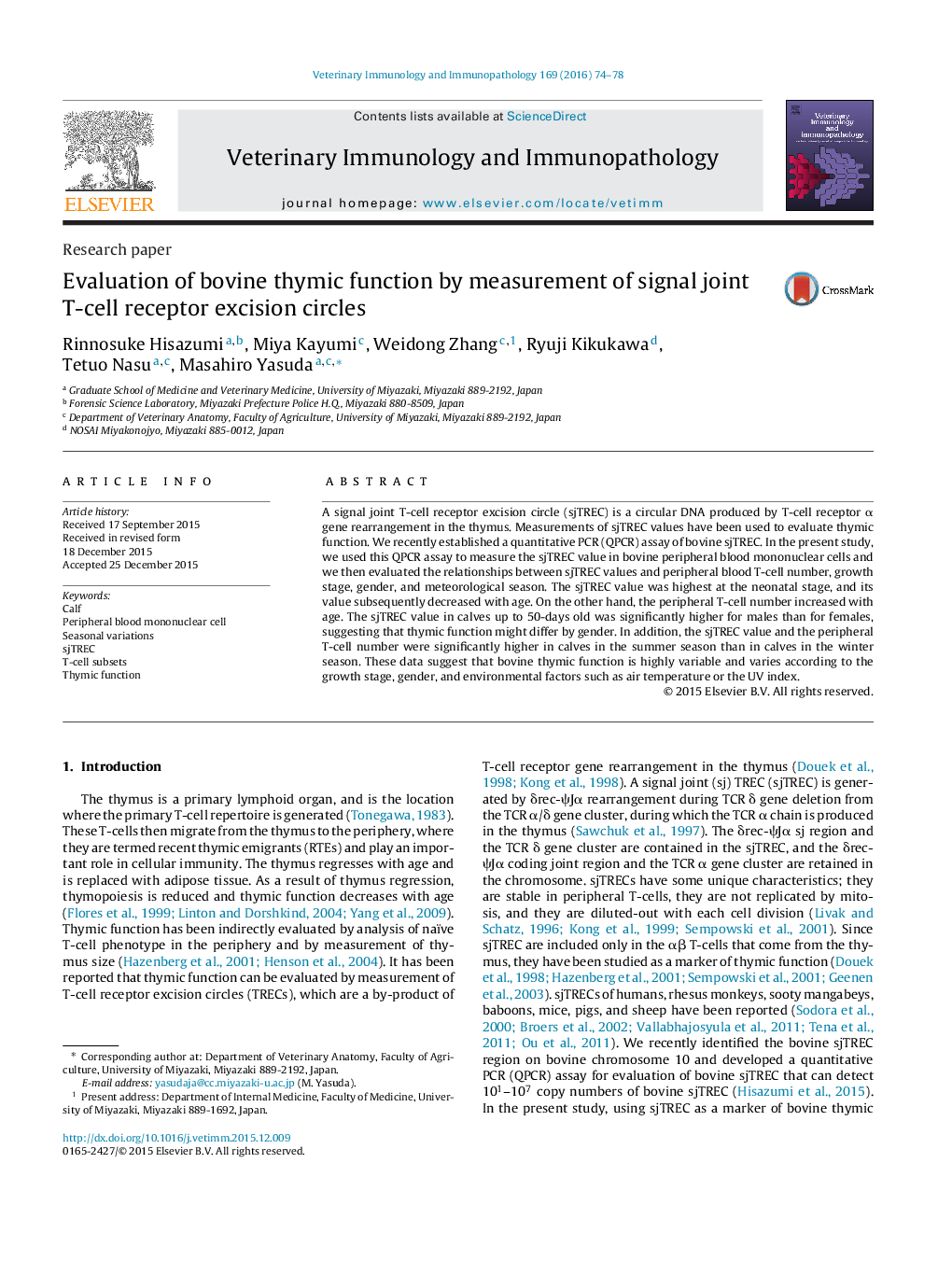| Article ID | Journal | Published Year | Pages | File Type |
|---|---|---|---|---|
| 5796628 | Veterinary Immunology and Immunopathology | 2016 | 5 Pages |
A signal joint T-cell receptor excision circle (sjTREC) is a circular DNA produced by T-cell receptor α gene rearrangement in the thymus. Measurements of sjTREC values have been used to evaluate thymic function. We recently established a quantitative PCR (QPCR) assay of bovine sjTREC. In the present study, we used this QPCR assay to measure the sjTREC value in bovine peripheral blood mononuclear cells and we then evaluated the relationships between sjTREC values and peripheral blood T-cell number, growth stage, gender, and meteorological season. The sjTREC value was highest at the neonatal stage, and its value subsequently decreased with age. On the other hand, the peripheral T-cell number increased with age. The sjTREC value in calves up to 50-days old was significantly higher for males than for females, suggesting that thymic function might differ by gender. In addition, the sjTREC value and the peripheral T-cell number were significantly higher in calves in the summer season than in calves in the winter season. These data suggest that bovine thymic function is highly variable and varies according to the growth stage, gender, and environmental factors such as air temperature or the UV index.
